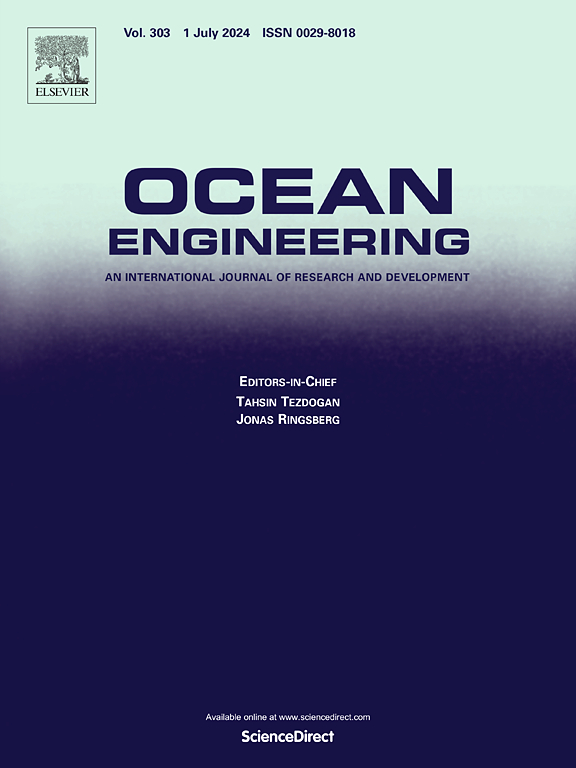Integrated CFD and hydrodynamic correction approach for load response analysis of floating offshore wind turbine
IF 4.6
2区 工程技术
Q1 ENGINEERING, CIVIL
引用次数: 0
Abstract
This study investigates the load response of a 10 MW FOWT mounted on a semi-submersible platform using CFD and hydrodynamic correction methods. The primary objective is to derive generalized correction coefficients through free decay simulations and evaluate the load response under regular wave conditions. To achieve this, three correction approaches, damping coefficient-based, drag coefficient-based, and a hybrid combining both were compared. A newly designed 10 MW semi-submersible substructure connected by pontoons was employed instead of the extensively studied OC4 DeepCwind model. The analysis revealed that the correction method relying solely on damping coefficients failed to capture critical load responses under regular wave conditions and demonstrated inaccuracies. In contrast, the hybrid correction method, which incorporates both drag and damping coefficients, better captured viscous effects and improved damping accuracy, leading to more accurate load response predictions for the 10 MW semi-submersible FOWT. These findings highlight the necessity of considering both free decay results and real-world environmental conditions when determining correction coefficients to enhance prediction accuracy. This study evaluates various correction approaches to enhance hydrodynamic modeling accuracy of FOWTs.
求助全文
约1分钟内获得全文
求助全文
来源期刊

Ocean Engineering
工程技术-工程:大洋
CiteScore
7.30
自引率
34.00%
发文量
2379
审稿时长
8.1 months
期刊介绍:
Ocean Engineering provides a medium for the publication of original research and development work in the field of ocean engineering. Ocean Engineering seeks papers in the following topics.
 求助内容:
求助内容: 应助结果提醒方式:
应助结果提醒方式:


